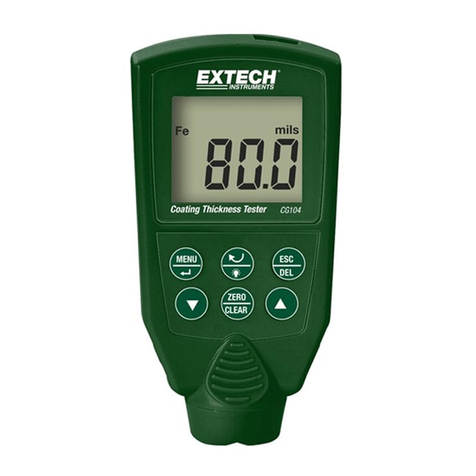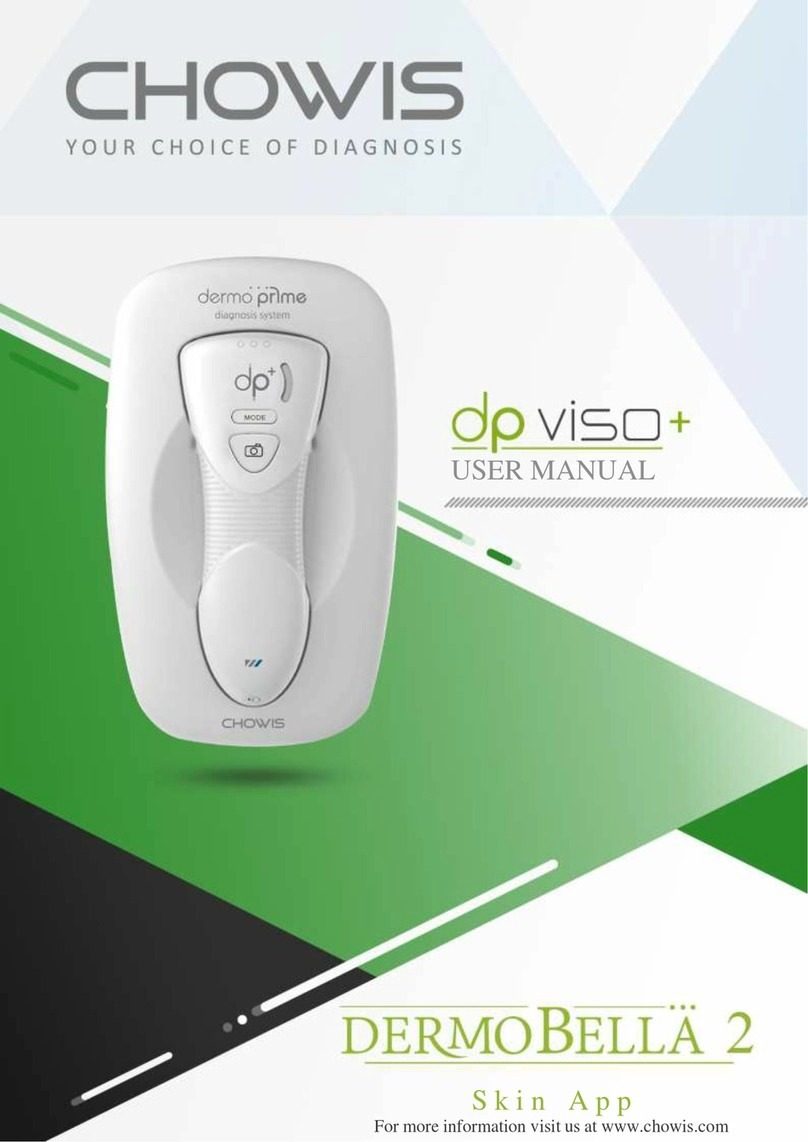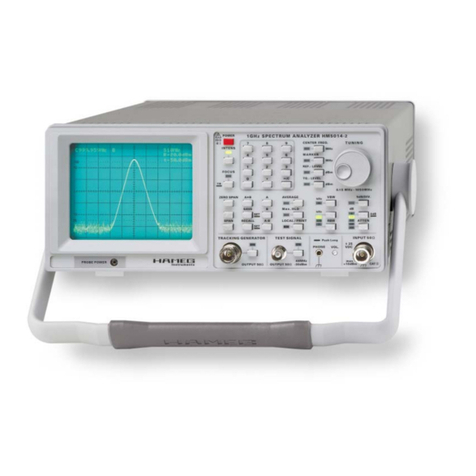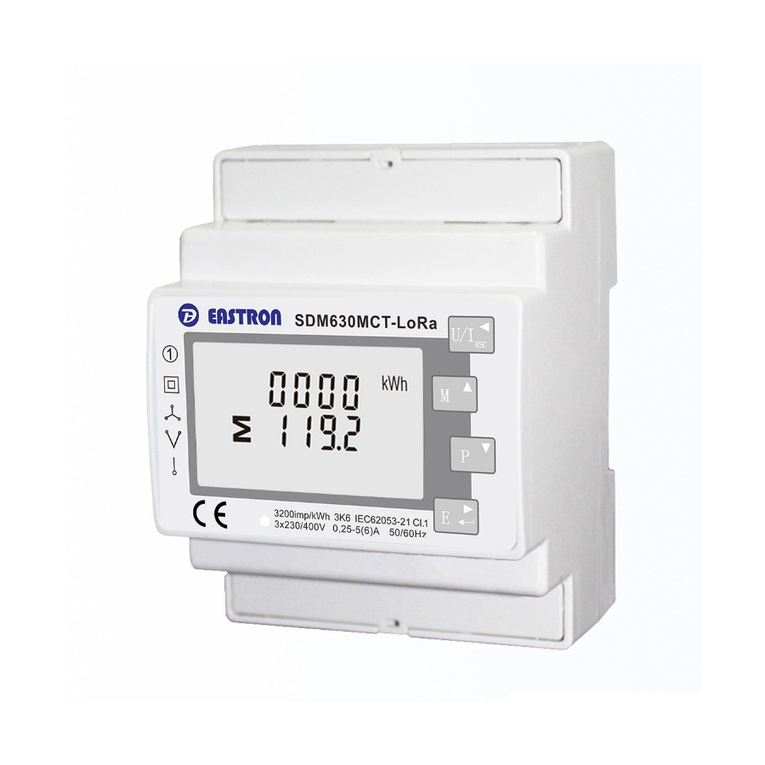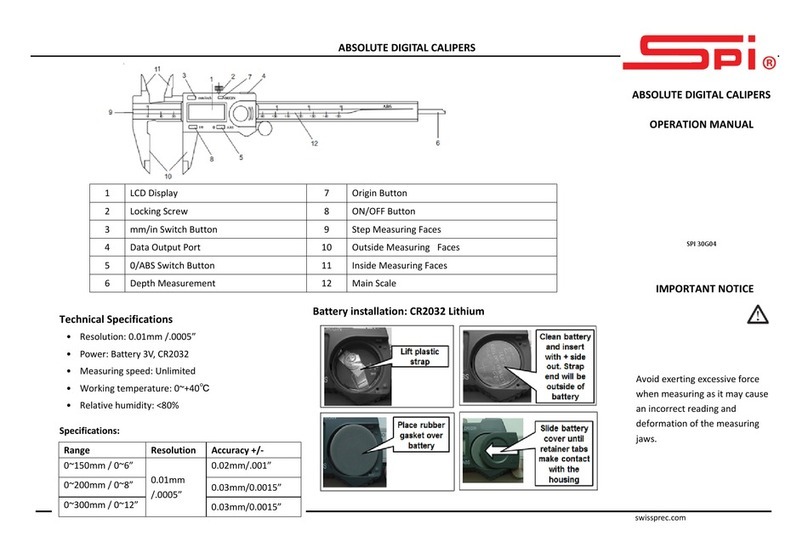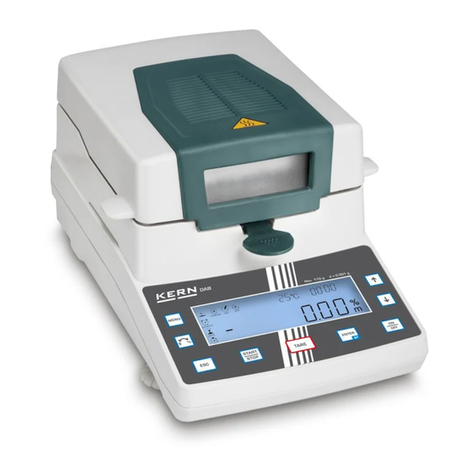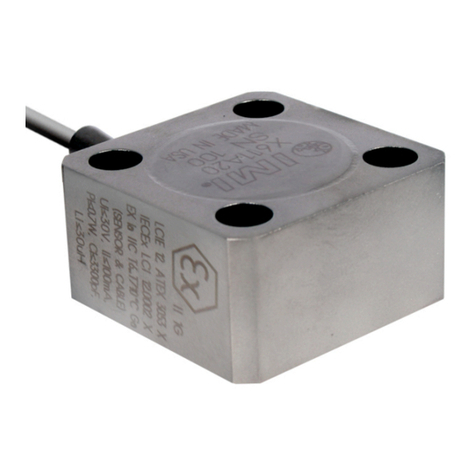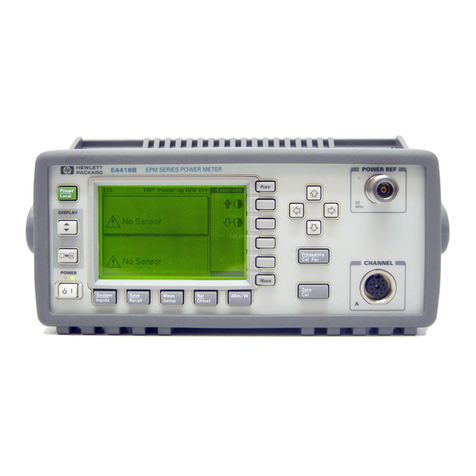Ecotech Serinus 57 User manual

www.ecotech.com
Serinus 57
Total Reduced
Sulfur Analyser
User Manual
Version: 1.0


Serinus 57 User manual 1.0 Front Matter
i
Manufacturers statement
Thank you for selecting the Ecotech Serinus 57 Total Reduced Sulfur Analyzer.
The Serinus series is the next generation of Ecotech designed and manufactured gas
analyzer, the Serinus 57 will perform Total Reduced Sulfur measurements over a
range of 0-2ppm with an LDL of < 0.5 ppb .
This User Manual provides a complete product description including operating
instructions, calibration, and maintenance requirements for the Serinus 57.
Reference should also be made to the relevant local standards, which should be used
in conjunction with this manual. Some relevant standards are listed in the References
section of this manual.
If, after reading this manual you have any questions or you are still unsure or unclear
on any part of the Serinus 57 then please do not hesitate to contact Ecotech or your
local Ecotech distributor.
Ecotech also welcomes any improvements that you feel would make this a more
useable and helpful product then please send your suggestions to us here at Ecotech.
Please help the environment and recycle the
pages of this manual when finished using it.
Notice
The information contained in this manual is subject to change without notice. Ecotech
reserves the right to make changes to equipment construction, design, specifications
and /or procedures without notice.
Copyright © 2011. All rights reserved. Reproduction of this manual, in any form,
is prohibited without the written consent of Ecotech Pty Ltd.

Front Matter Serinus 57 User manual 1.0
ii
WARNING
Hazardous voltages exist within the analyzer. The analyzer lid should be closed and
quarter turn lid fasteners locked when the analyzer is left unattended or turned on.
Ensure the power cord, plugs and sockets are maintained in a safe working condition
and lid is closed and screw is fastened in place.
Safety requirements
To reduce the risk of personal injury caused by electrical shock, follow all
safety notices and warnings in this documentation.
If the equipment is used for purposes not specified by Ecotech, the protection
provided by this equipment may be impaired.
Replacement of any part should only be carried out by qualified personnel,
using only parts specified by Ecotech as these parts meet stringent Ecotech
quality assurance standards. Always disconnect power source before removing
or replacing any components.

Serinus 57 User manual 1.0 Front Matter
iii
Factory service/warranty
This product has been manufactured in an ISO 9001/ISO 14000 facility with care and
attention to quality.
The product is subject to a 12-month warranty on parts and labour from date of
shipment (the warranty period). The warranty period commences when the product is
shipped from the factory. Lamps, fuses, batteries and consumable items are not
covered by this warranty.
Each analyzer is subjected to a vigorous testing procedure prior to despatch and will
be accompanied with a parameter list and a multipoint calibration check thereby
enabling the analyzer to be installed and ready for use without any further testing.
To ensure that we process your factory repairs and returned goods efficiently and
expeditiously, we need your help. Before you ship any equipment to our factory,
please call your local Ecotech service response centre (or distributor) to obtain a
return authorisation number.
When you contact Ecotech please provide the following information:
1. your name, telephone number and Facsimile number
2. Your company name
3. The model number or a description of each item
4. The serial number of each item, if applicable
5. A description of the problem or the reason you are returning the equipment
(e.g. sales return, warranty return, calibration, etc)
If you are required to return the equipment an accompanying document with:
1. Your name, number and Facsimile number
2. Your company name with return shipment
3. The model number or a description of each item
4. The serial number of each item, if applicable
A description of the problem/reason you are returning the equipment

Front Matter Serinus 57 User manual 1.0
iv
Claims for Damaged Shipments and
Shipping Discrepancies
Damaged shipments
1. Inspect all instruments thoroughly on receipt. Check materials in the
container(s) against the enclosed packing list. If the contents are damaged
and/or the instrument fails to operate properly, notify the carrier and Ecotech
immediately.
2. The following documents are necessary to support claims:
a. Original freight bill and bill lading
b. Original invoice or photocopy of original invoice
c. Copy of packing list
d. Photographs of damaged equipment and container
e. Contact you freight forwarder for insurance claims
You may want to keep a copy of these documents for your records also.
Refer to the instrument name, model number, serial number, sales order
number, and your purchase order number on all claims. Upon receipt of a
claim, we will advice you of the disposition of your equipment for repair or
replacement.
Shipping Discrepancies
Check all containers against the packing list immediately on receipt. If a shortage or
other discrepancy is found, notify the carrier and Ecotech immediately. We will not be
responsible for shortages against the packing list unless they are reported promptly
(within 7 days).

Serinus 57 User manual 1.0 Front Matter
v
Internationally recognised symbols used
on Ecotech Equipment
Electrical fuse
IEC 60417, No. 5016
Earth (ground) terminal
IEC 417, No. 5017
Equipotentiality
IEC 417, No. 5021
Alternating current
IEC 417, No. 5032
Caution, hot surface
IEC 417, No. 5041
Caution, refer to
accompanying documents
ISO 3864, No. B.3.1
Caution, risk of electric shock
ISO 3864, No. B.3.6

Front Matter Serinus 57 User manual 1.0
vi
Manual Revision History
Ecotech Manual ID: MAN 0078
Manual PN: M010035
Current Revision: 1.0
Date released: February 2011
Description: User Manual for the Serinus 57 Total Reduced
Sulfur analyzer
This manual is the full user manual for the Serinus 57 Total Reduced Sulfur analyzer.
This manual contains all relevant information on theory, specifications, installation,
operation, maintenance, calibration, communication and troubleshooting. Any
information that cannot be found within this manual can be found by contacting
Ecotech at:
Phone: +61 1300 364 946
Fax: +61 1300 668 763
Address: Ecotech Pty Ltd
1492 Ferntree Gully Rd
Knoxfield Victoria
Australia 3180
Website www.ecotech.com
Edition
Date
Summary
Pages
1.0
February
2011
Initial release
all

Serinus 57 User manual 1.0 Front Matter
vii
Table of Contents
TOTAL REDUCED SULFUR ANALYZER .................................................................................... 1
1INTRODUCTION.............................................................................................................1
1.1 DESCRIPTION................................................................................................................... 1
1.2 SPECIFICATIONS.............................................................................................................. 1
1.2.1 MEASUREMENT.............................................................................................................. 1
1.2.2 PRECISION/ACCURACY.................................................................................................. 1
1.2.3 CALIBRATION ................................................................................................................ 1
1.2.4 POWER ........................................................................................................................... 2
1.2.5 OPERATING CONDITIONS ............................................................................................... 2
1.2.6 COMMUNICATIONS ........................................................................................................ 2
1.2.7 PHYSICAL DIMENSIONS.................................................................................................. 2
1.3 NOMENCLATURE............................................................................................................. 3
1.4 BACKGROUND/THEORY................................................................................................. 4
1.4.1 MEASUREMENT THEORY............................................................................................... 4
1.4.2 KALMAN FILTER THEORY .............................................................................................. 5
1.5 INSTRUMENT DESCRIPTION ............................................................................................ 5
1.5.1 PARTICULATE FILTER .................................................................................................... 6
1.5.2 HYDROCARBON KICKER................................................................................................ 6
1.5.3 ZERO AIR SCRUBBER..................................................................................................... 6
1.5.4 REACTION CELL............................................................................................................. 7
1.5.5 MAIN CONTROLLER PCB .............................................................................................. 7
1.5.6 REFERENCE DETECTOR PREAMPLIFIER.......................................................................... 7
1.5.7 PMT HIGH VOLTAGE SUPPLY AND PREAMPLIFICATION............................................... 7
1.5.8 LAMP DRIVER PCB........................................................................................................ 8
1.5.9 PRESSURE PCB.............................................................................................................. 8
1.5.10 POWER SUPPLY ............................................................................................................ 8
1.5.11 COMMUNICATIONS ...................................................................................................... 8
1.5.12 HTO 1000 EXTERNAL THERMAL CONVERTER (OPTIONAL) ......................................... 9
2INSTALLATION ............................................................................................................10
2.1 INITIAL CHECK.............................................................................................................. 10
2.2 MOUNTING/SITING........................................................................................................ 11
2.3 INSTRUMENT SETUP ...................................................................................................... 11
2.3.1 PNEUMATIC CONNECTIONS.......................................................................................... 11
2.3.2 POWER CONNECTIONS ................................................................................................. 12
2.3.3 COMMUNICATIONS CONNECTIONS .............................................................................. 13
2.3.4 ANALYZER SET UP ....................................................................................................... 13
2.4 TRANSPORTING/STORAGE............................................................................................ 14
3OPERATION..................................................................................................................15
3.1 WARMUP........................................................................................................................ 15
3.2 GENERAL OPERATIONAL INFORMATION..................................................................... 15
3.3 MAIN SCREEN ................................................................................................................ 16
3.4 SAMPLING...................................................................................................................... 17
3.5 MENUS AND SCREENS.................................................................................................... 18
3.5.1 QUICK MENU............................................................................................................... 18

Front Matter Serinus 57 User manual 1.0
viii
3.5.2 ANALYZER STATE........................................................................................................ 19
3.5.3 GENERAL SETTINGS..................................................................................................... 21
3.5.4 MEASUREMENT SETTINGS ........................................................................................... 22
3.5.5 CALIBRATION MENU.................................................................................................... 23
3.5.6 SERVICE....................................................................................................................... 25
3.5.7 COMMUNICATIONS ...................................................................................................... 29
4CALIBRATION..............................................................................................................33
4.1 ZERO CALIBRATION...................................................................................................... 33
4.2 SPAN CALIBRATION ...................................................................................................... 33
4.3 MULTIPOINT CALIBRATION ......................................................................................... 34
4.4 PRESSURE CALIBRATION .............................................................................................. 36
4.5 PRECISION CHECK......................................................................................................... 37
5COMMUNICATIONS ....................................................................................................38
5.1 RS232 COMMUNICATION.............................................................................................. 38
5.2 USB COMMUNICATION................................................................................................. 38
5.3 TCP/IP NETWORK COMMUNICATION......................................................................... 38
5.4 DIGITAL/ANALOG COMMUNICATION .......................................................................... 40
5.5 SERINUS DOWNLOADER PROGRAM .............................................................................. 43
5.5.1 SETTINGS ..................................................................................................................... 43
5.5.2 DATA ........................................................................................................................... 46
5.5.3 REMOTE SCREEN.......................................................................................................... 47
5.5.4 REMOTE TERMINAL ..................................................................................................... 48
6SERVICE........................................................................................................................49
6.1 PNEUMATIC DIAGRAM .................................................................................................. 49
6.2 MAINTENANCE TOOLS .................................................................................................. 49
6.3 MAINTENANCE SCHEDULE............................................................................................ 50
6.4 MAINTENANCE PROCEDURES....................................................................................... 51
6.4.1 PARTICULATE FILTER REPLACEMENT.......................................................................... 51
6.4.2 CLEAN FAN FILTER...................................................................................................... 51
6.4.3 DFU REPLACEMENT.................................................................................................... 52
6.4.4 QUICK LEAK TEST........................................................................................................ 52
6.4.5 ADVANCED LEAK CHECK............................................................................................. 53
6.4.6 REPLACE ZERO AIR SCRUBBER.................................................................................... 53
6.4.7 REPLACE PMT DESICCANT PACK ................................................................................ 54
6.4.8 REPLACE DFU FILTER ................................................................................................. 55
6.4.9 CHECK UV LAMP ALIGNMENT..................................................................................... 55
6.4.10 PRESSURE SENSOR CHECK ......................................................................................... 56
6.5 PARTS LIST..................................................................................................................... 58
6.6 UPDATING FIRMWARE .................................................................................................. 59
7TROUBLESHOOTING.................................................................................................61
7.1 ZERO FLOW................................................................................................................... 62
7.2 ELECTRONIC ZERO ADJUST.......................................................................................... 63
7.3 TRS REACTION CELL TEMPERATURE FAILURE .......................................................... 63

Serinus 57 User manual 1.0 Front Matter
ix
8OPTIONAL EXTRAS....................................................................................................65
8.1 DUAL SAMPLE FILTER................................................................................................... 65
8.2 RACK MOUNT KIT.......................................................................................................... 65
8.3 INTERNAL PUMP ............................................................................................................ 67
8.3.1 PNEUMATIC DIAGRAM (INTERNAL PUMP).................................................................... 67
8.3.2 ADDITIONAL COMPONENTS ......................................................................................... 67
8.3.3 REMOVED COMPONENTS ............................................................................................. 67
8.3.4 MENUS......................................................................................................................... 68
8.3.5 FLOW CALIBRATION.................................................................................................... 69
8.3.6 PRESSURE CALIBRATION ............................................................................................. 70
8.4 HTO 1000 CONVERTER................................................................................................. 71
8.4.1 SPECIFICATIONS........................................................................................................... 71
8.4.2 HTO 1000 COMPONENTS............................................................................................. 71
8.4.3 MAINTENANCE ............................................................................................................ 72
APPENDIX A ADVANCED PROTOCOL PARAMETER LIST.....................................75
APPENDIX B –EC9800 PROTOCOL..............................................................................81
APPENDIX C –BAVARIAN PROTOCOL .......................................................................83

Front Matter Serinus 57 User manual 1.0
x
List of Figures
Figure 1 Simple pneumatic diagram.......................................................................................... 4
Figure 2 Optical measurement theory....................................................................................... 5
Figure 3 Major Components of analyzer ................................................................................... 6
Figure 4 Opening the lid .......................................................................................................... 10
Figure 5 Instrument Back panel............................................................................................... 11
Figure 6. Switching battery off................................................................................................. 14
Figure 7 Serinus front panel .................................................................................................... 15
Figure 8 Excel graph of Multipoint Calibration......................................................................... 35
Figure 9 Pressure Calibration.................................................................................................. 36
Figure 10 Pressure menu........................................................................................................ 37
Figure 11 Communication ports .............................................................................................. 38
Figure 12 Device Installer pop up window............................................................................... 39
Figure 13 Device Installer XPort-03......................................................................................... 39
Figure 14 Device Installer - Telnet Configuration.................................................................... 39
Figure 15 Serinus 25 pin microprocessor board (with default jumpers highlighted) ............... 41
Figure 16 External 25pin I/O individual pin descriptions ......................................................... 42
Figure 17 Serinus downloader - settings tab........................................................................... 45
Figure 18 Serinus Downloader –Data tab .............................................................................. 46
Figure 19 Serinus Downloader –Remote Screen tab............................................................. 47
Figure 20 Serinus downloader - Remote Terminal tab............................................................ 48
Figure 21 Pneumatic diagram ................................................................................................. 49
Figure 22 Removing plunger ................................................................................................... 51
Figure 23 Removing fan filter .................................................................................................. 51
Figure 24 Plugged sample and calibration ports..................................................................... 52
Figure 25 Zero scrubber removal ............................................................................................ 53
Figure 26 Position of desiccant packs..................................................................................... 54
Figure 27 Collets of the UV lamp............................................................................................. 56
Figure 28 Dual filter option installed........................................................................................ 65
Figure 29 Installation of rack mount brackets.......................................................................... 65
Figure 30 Installation of lid to rack mount brackets................................................................. 66
Figure 31 Rack slide lock ........................................................................................................ 66
Figure 32 Pneumatic diagram with internal pump................................................................... 67
List of Tables
Table 1 Maintenance Schedule............................................................................................... 50
Table 2 Parts List..................................................................................................................... 58
Table 3 Troubleshoot list ......................................................................................................... 61
Table 4 Zero flow Troubleshoot............................................................................................... 62
Table 5 Internal pump additional components ........................................................................ 67
Table 6 Internal pump removed components.......................................................................... 67
Table 7 Advanced Protocol Parameter list.............................................................................. 75
List of Equations
Equation 1 Instrument accuracy.............................................................................................. 35

Serinus 57 User manual 1.0 Introduction
1
1
1
1
I
I
In
n
nt
t
tr
r
ro
o
od
d
du
u
uc
c
ct
t
ti
i
io
o
on
n
n
1.1 Description
The Serinus 57 Total Reduced Sulfur analyzer uses UV fluorescent radiation
technology combined with an external thermal converter to detect Total Reduced
Sulfur to a sensitivity of < 0.5 ppb in the range of 0-2 ppm. The Serinus 57 measures
TRS with the following instruments/techniques:
Thermal converter
Hydrocarbon kicker
UV lamp
Fluorescence cell
Optical bandpass filters
Photomultiplier tube (PMT)
The TRS concentration is automatically corrected for gas temperature and pressure
changes and referenced to 0°C, 20°C or 25°C at 1 atmosphere. This manual will detail
the operation, calibration, preventive maintenance, cautions and health warnings.
1.2 Specifications
1.2.1 Measurement
Range:
0-2 ppm auto ranging
Lower detectable limit:
< 0.5 ppb or 0.2% of concentration reading, whichever is greater; with Kalman
filter active.
1.2.2 Precision/Accuracy
Precision:
< 0.5 ppb
Linearity:
±1% of full scale (from best straight-line fit).
Sample flow rate:
0.675 slpm
1.2.3 Calibration
Zero drift
Temperature dependant: 0.1 ppb per °C
24 hours: < 1.0 ppb
30 days: < 1.0ppb
Span drift
Temperature dependant: 0.1% per °C
24 hours: 0.5% of reading
30 days: 0.5% of reading

Introduction Serinus 57 User manual 1.0
2
1.2.4 Power
Operating voltage:
99 to 132 VAC, 198 to 264 VAC, 47 to 63 Hz
1.2.5 Operating conditions
Ambient Temperature Range:
5ºC to 40 ºC (41 ºF to 104 ºF)
Sample pressure dependance:
5% change in pressure produces less than a 1% change in reading
1.2.6 Communications
Analog Output
Menu selectable current output of 0-20 mA, 2-20mA or 4-20 mA
or
Voltage output of 0 to 5 V, with menu selectable zero offset of 0V, 0.25V, or
0.5V.
Range: Fully selectable
Resolution: 0.5 ppb or 0.2% of analog output full scale, whichever is greater.
Digital Output
RS232 port #1: Normal digital communication or termination panel
connection
RS232 port #2: Multidrop port used for multiple analyzer connections
on a single RS232
USB port connection on rear panel
25 pin connector with discrete status and user control
USB stick memory (front panel) for data logging, event logging and parameter
storage
1.2.7 Physical dimensions
Case dimensions:
Length: 620mm with no handle (24.4” inches)
Width: 440mm (17.3” inches)
Height: 178mm/4RU (7” inches)
Weight: 18.8 kg

Serinus 57 User manual 1.0 Introduction
3
1.3 Nomenclature
Span: A gas sample of known composition and concentration used to
calibrate/check the upper range of the instrument (Hydrogen sulfide or
Sulfur Dioxide).
Zero: Zero calibration uses zero air (TRS and SO2scrubbed ambient
air) to calibrate/check the lower range of the instrument.
Background: External signals that can be confused with that of the
signal being measured.
Zero drift: the change in instrument response to zero pollutant
concentration over 12hr and 24hr periods of continuous unadjusted
operation.
Automatic zero: The automatic zero performs a zero check at a
specified time through a 24 hour cycle which adjusts the lower limit of
the analyzers.
Zero air: Purified air in which the combined effect of the
concentration of impurities is less than 1% of the relevant midrange of
the analyzer instrument. Sufficient purified air can be obtained by
passing dry ambient air through an activated charcoal filter and a
particulate filter.
External span source: Span gas that is delivered via an external
accredited cylinder (e.g. NATA/NIST).
Sample Air: Sample air is defined as the sample before it has entered
the reaction cell, as distinguished from the exhaust air.
Exhaust air: Exhaust air is the sample air after it has passed through
the reaction/measurement/detection cell and is moving towards being
expelled from the analyzer.
ID and OD: Measurements of tubing, ID is the internal diameter of
tubing, OD is the outer diameter.

Introduction Serinus 57 User manual 1.0
4
1.4 Background/ Theory
Total reduced sulfur(s), which include hydrogen sulfide (H2S), methyl mercaptan
(methanethiol, CH3SH), dimethyl sulfide (CH3SCH3), and dimethyl disulfide
(CH3S2CH3), occur naturally in the environment and can also be present in numerous
industrial gaseous streams –petroleum refining, natural gas extraction, and chemical
operations like the pulp/paper industry.
Hydrogen sulfide is the most prevalent of the total reduced sulfurs, and is commonly
found in volcanic gases, marshes and swamps, wetlands and mud flats, sulfur springs
and decaying organic matter. Additionally, hydrogen sulfide is produced by living
organisms, including human beings, through the digestion and metabolization of
sulfur-containing materials.
It must be noted that sulfur dioxide (SO2), sulfur trioxide (SO3) and sulfuric acid mist
are not included in the determination of TRS, as these are oxidized sulfur compounds
and are permitted and monitored separately from TRS..
1.4.1 Measurement Theory
The measurement of Total Reduced Sulfur is based on classical fluorescence
spectroscopy principles and the conversion of TRS into SO2. The Serinus 57 uses a
SO2scrubber to scrub all SO2out of the sampler before it reaches the TRS converter.
When the SO2free air reaches the converter all TRS is then converted into SO2.
Sulfur Dioxide (SO2) exhibits a strong ultraviolet (UV) absorption spectrum between
200 and 240nm, when SO2absorbs UV from this, emission of photons occurs (300-
400nm). The amount of fluorescence emitted is directly proportional to the SO2
concentration. The Serinus 57 follows these principles and measurement techniques:
Sample air is passed through a hydrocarbon kicker which removes
hydrocarbons in high concentration in sample air to low hydrocarbon
concentration exhaust air)
Figure 1 Simple pneumatic diagram
A zinc discharge lamp and a UV bandpass filter are used to produce radiation
at 214nm.
The radiation (214nm) is focused into the fluorescence cell where it interacts
with SO2molecules and emits photons uniformly in all directions.
A portion of the fluorescence is collected and filtered.

Serinus 57 User manual 1.0 Introduction
5
Wavelengths at 310-350nm pass through the filter where they reach the
photomultiplier and record a signal.
A reference detector monitors the emission from the zinc lamp and is used to
correct for fluctuations in lamp intensity.
Figure 2 Optical measurement theory
Exhaust air is scrubbed with a charcoal scrubber to eliminate Hydrocarbons
and SO2. This air is then ideal for use in the hydrocarbon kicker to remove
hydrocarbons from sample air.
1.4.2 Kalman filter theory
The Serinus analyzer series use the advanced digital Kalman filter. This filter
provides the best possible compromise between response time and noise reduction for
the type of signal and noise present in ambient air analyzers.
The Kalman filter enhances measurements by making the filter time base variable,
depending on the change rate of the measured value. If the signal rate is changing
rapidly, the instrument is allowed to respond quickly. When the signal is steady, a
long integration time is used to reduce noise. The system continuously analyzes the
signal and uses the appropriate filtering time.
1.5 Instrument description
The Total Reduced Sulfur analyzer consists of six main assemblies:
The external thermal converter
The pneumatics to transfer sample and exhaust gas
The sensors for the measurement of TRS (optical cell) and other relevant
parameters
The control system which encompasses all circuit boards, is used to control all
sensors and pneumatic components

Introduction Serinus 57 User manual 1.0
6
The power supply which supplies power for all the instrument processors
The Communication module to access data
Figure 3 Major Components of analyzer
1.5.1 Particulate filter
The Particulate filter is a Teflon 5 micron (µm) filter with a diameter
of 47mm. This filter eliminates all particles larger than 5µm and
condensed water vapour that interfere with sample measurement.
1.5.2 Hydrocarbon Kicker
The Hydrocarbon kicker removes interfering hydrocarbons from
sample air. This is achieved by using counter current exchange, where
an air with a lower concentration moves in an opposite direction to air
with a higher concentration. The high concentration of hydrocarbons
diffuse through a selective permeation membrane to the low
concentration air and are removed with exhaust air. Increasing the flow
of the low concentration air also increase the rate of diffusion.
1.5.3 Zero Air Scrubber
A charcoal scrubber is used to produce TRS free air which is used in
the hydrocarbon kicker to remove hydrocarbons from sample air.

Serinus 57 User manual 1.0 Introduction
7
1.5.4 Reaction Cell
UV lamp
The UV lamp is a discharge zinc UV lamp which emits UV radiation
over a broad range
UV Bandpass Filter
The bandpass filter only allows UV at 214nm through into the cell.
Photomultiplier tube
The PMT detects the amount of light reaching its sensors. The filtering
of light reaching the PMT allows direct measurement of SO2in the
cell.
Optical Bandpass Filter
The optical bandpass filter is a coloured glass that only allows light of
a specific wavelength through (310-350nm)
UV Grade Lenses
Two UV grade silica lenses are used in the optical path, the first
(plano-convex) to focus UV radiation inside the measurement cell and
the second (bi-convex) focuses the fluorescent light onto the PMT
cathode from the SO2reactions.
UV Reference Detector
The UV reference detector monitors the intensity of UV radiation
entering the measurement cell. This measurement is used to
compensate for variations in UV lamp output.
1.5.5 Main Controller PCB
The Main Controller PCB controls all the processes within the
instrument, it contains a battery backed clock/calendar and an on board
microprocessor. The Main Controller PCB is located at the top of the
instrument, above the rest of the components when lid is removed. The
PCB is hinged and can be lifted up to stand up vertically allowing easy
access to instrument components underneath.
1.5.6 Reference detector Preamplifier
This circuit board converts current signal from reference detector to a
voltage signal and provide amplification.
1.5.7 PMT High Voltage Supply and Preamplification
This is a single component within the PMT housing. Its function is to
supply high voltage to the PMT and to amplify the photocurrent signal
from the PMT.

Introduction Serinus 57 User manual 1.0
8
1.5.8 Lamp Driver PCB
This driver uses a high voltage and high frequency switching supply to
start and maintain the UV lamp at a constant intensity. The lamp
current is set by the microprocessor and is maintained at 27 mA.
1.5.9 Pressure PCB
The absolute pressure transducer is mounted to the measurement cell,
and used to measure the sample pressure in the cell. This pressure is
also used for the instrument to calculate flow.
1.5.10 Power supply
The power supply is a self-contained unit housed in a steel case
designed to meet CE requirements.
It has an input voltage of 115/230VAC 50/60 Hz and an output voltage
of 12 VDC power for distribution within the analyzer.
Note: Input voltage can be manually changed
by flicking the red switch left (230) for 220-
240V or right (110) for the 100-120V.
On/off switch
Located on the back panel (bottom right facing from behind the
instrument)
1.5.11 Communications
Communication between the analyzer and either a data logger, PC or
network can be performed with the following communication
connections located on the back panel (see Figure 5).
RS232 #1
This port is designed to be used for simple RS232 communication or
with a Termination Panel allowing the Serinus instrument to work as a
datalogger. This function is an optional extra and must be purchased
from Ecotech.
RS232 #2
This port is designed to be used for simple RS232 communication, or
in a daisy chain (multidrop) configuration (multiple analyzers
connected via the same RS232 cable).
USB
This port can be used for instrument communication and is also good
for quickly downloading data, onsite diagnostics and maintenance.
TCP/IP (optional)
This port is best used for remote access and real-time access to
instruments when a network is available to connect with.
Table of contents
Other Ecotech Measuring Instrument manuals

Ecotech
Ecotech Serinus 40 User manual
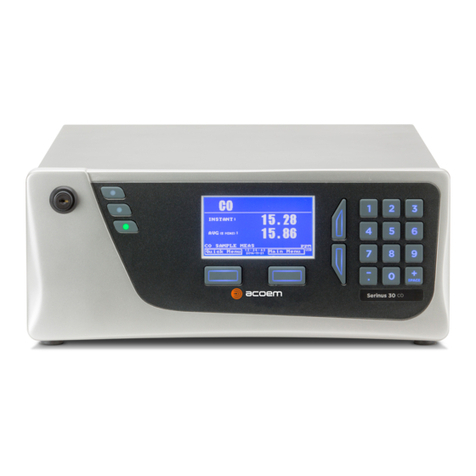
Ecotech
Ecotech Serinus 30 User manual
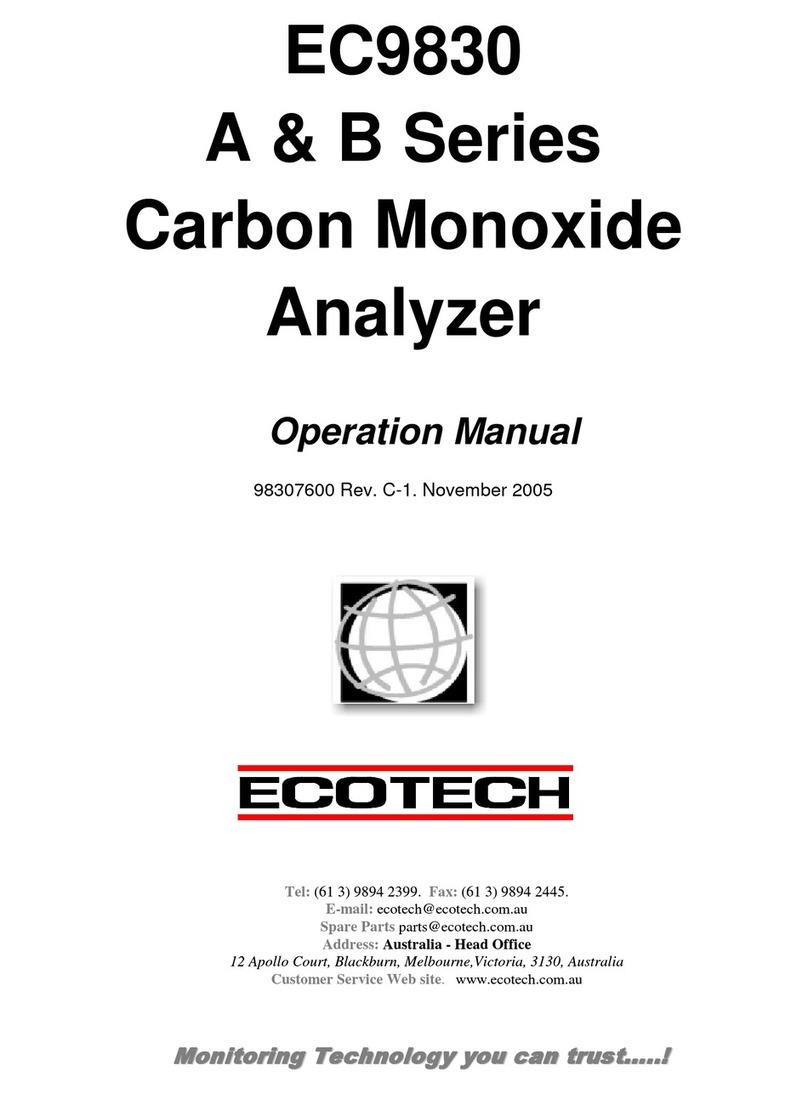
Ecotech
Ecotech A Series User manual
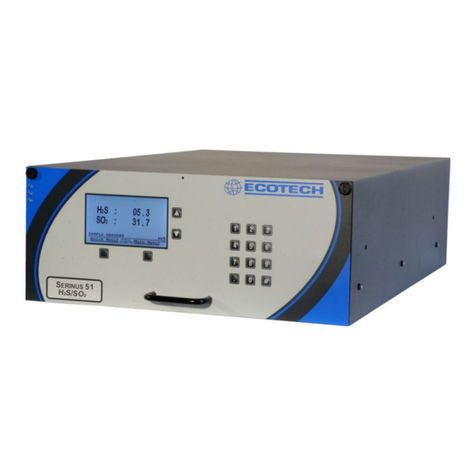
Ecotech
Ecotech Serinus 51 User manual
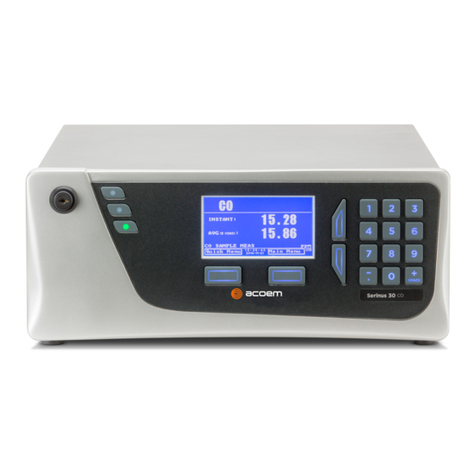
Ecotech
Ecotech Acoem Serinus 30 User manual
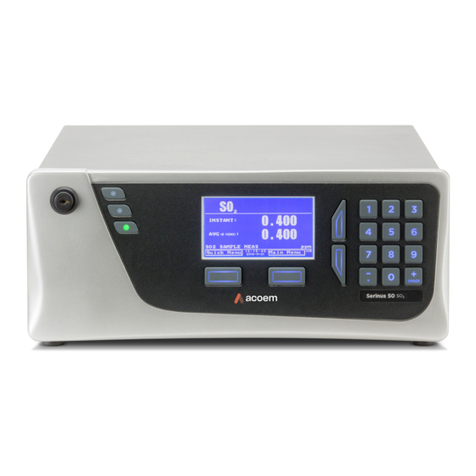
Ecotech
Ecotech Acoem Serinus 10 User manual

Ecotech
Ecotech HiVol 3000 User manual
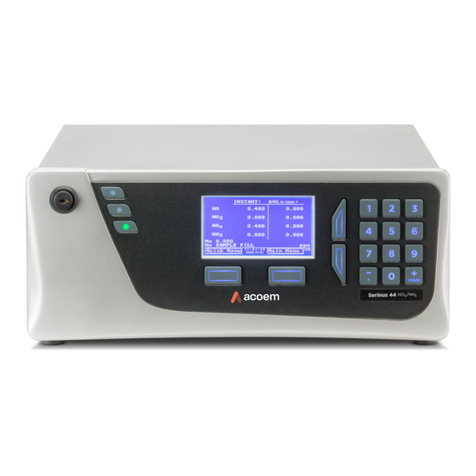
Ecotech
Ecotech Serinus 44 User manual
Popular Measuring Instrument manuals by other brands
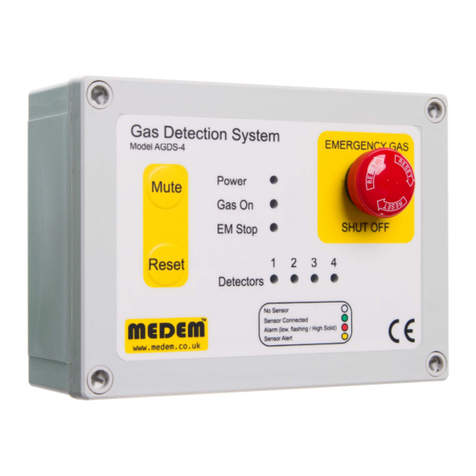
Medem
Medem AGDS-4 installation instructions
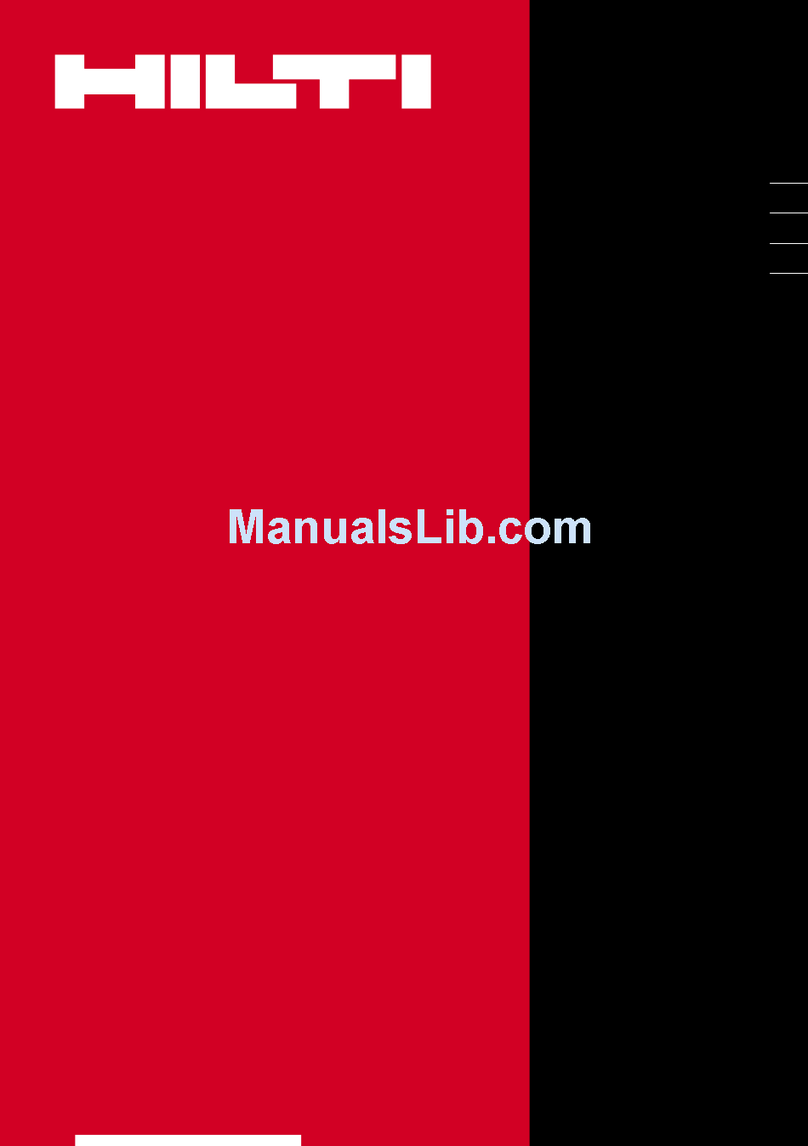
Hilti
Hilti PR 2-HS operating instructions
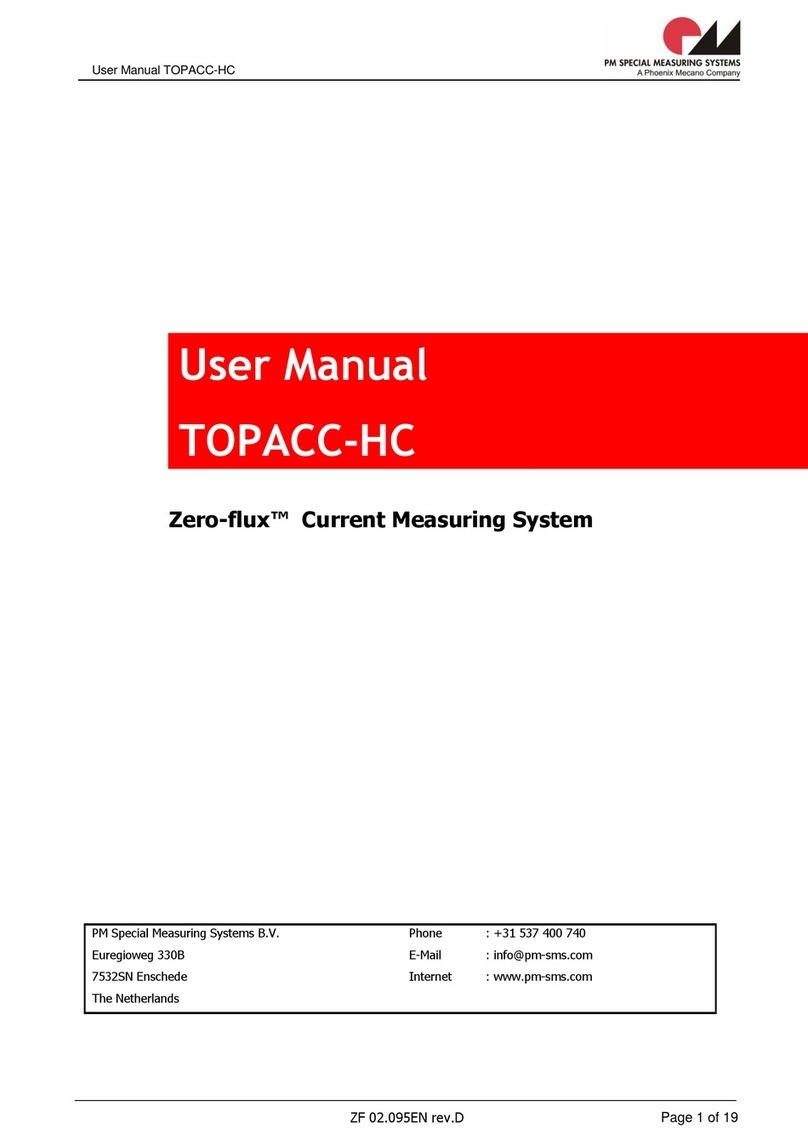
Phoenix Mecano
Phoenix Mecano Zero-flux TOPACC-HC user manual
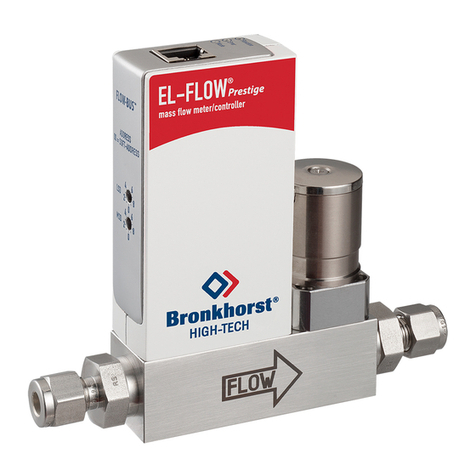
BRONKHORST
BRONKHORST EL-FLOW Prestige series instruction manual
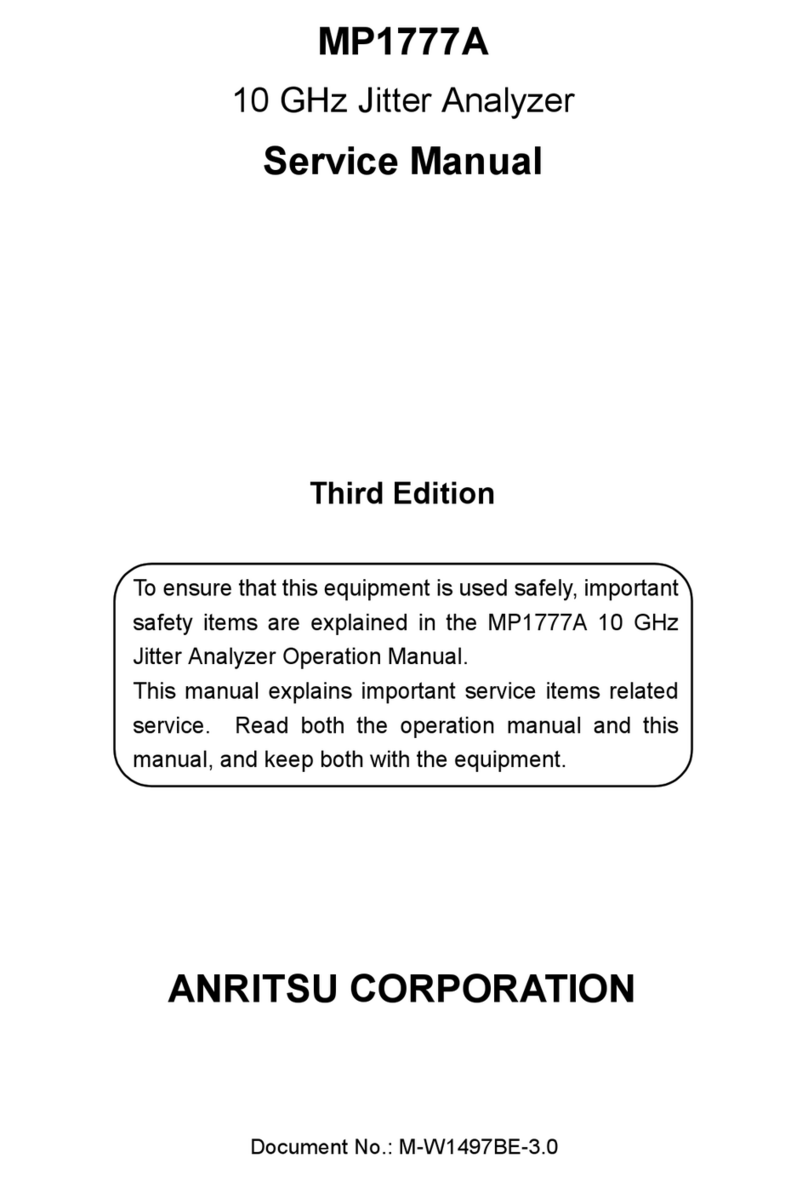
Anritsu
Anritsu MP1777A Service manual
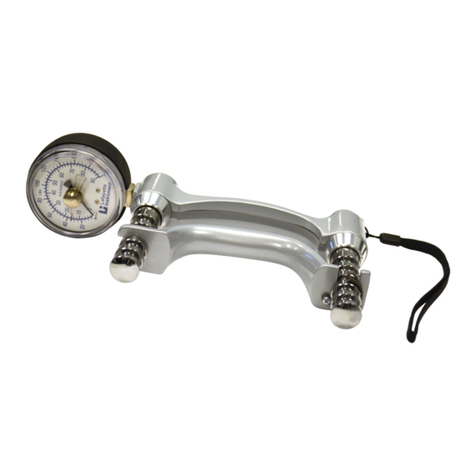
Lafayette Instrument
Lafayette Instrument J00105 User instructions
